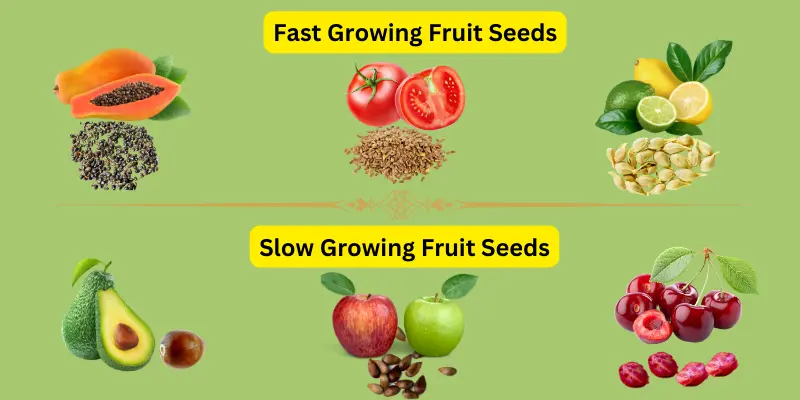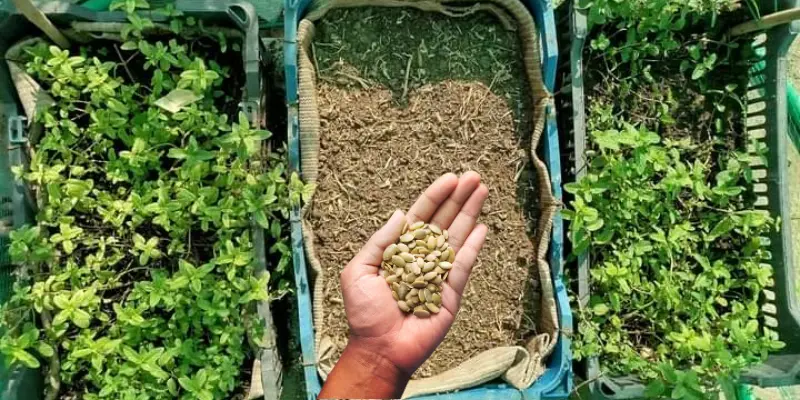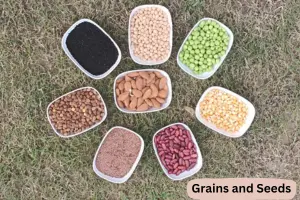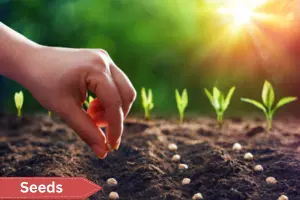Fast-Growing Seeds vs. Slow-Growing Seeds: A Complete Guide
Published: 22 May 2025
Welcome, Earth Caretakers!
Have you ever observed why some seeds burst into life while others take their sweet time? This is the fascinating world of fast-growing seeds vs. slow-growing seeds. Fast-growers are like a quick win, while slow-growers are the steady marathon runners of the garden.
Sheila, a botanist with seven years of experience, will guide you on this exciting journey. In this article, she will unwind the primary distinctions, benefits, examples, and optimal applications of both seed varieties, ensuring you make informed decisions for your garden.

By the end of this article, you will clearly understand which seeds are best suited for your gardening goals. This information will enable you to cultivate a flourishing garden confidently—let’s begin!
Adopt the pace of nature: her secret is patience.Ralph Waldo Emerson
Critical Differences Between Fast and Slow-Growing Seeds
Think of fast-growing seeds as pop music—catchy and quick, while slower development offers more robust, lasting plants. Slow-growing seeds are like classical music—slower to build but deeply satisfying.
| Aspects | Fast-Growing Seeds | Slow-Growing Seeds |
| Environmental Needs | Germinates and matures quickly, ideal for immediate results | Slower development, offering more robust, lasting plants |
| Ideal Uses | Quick harvests, ideal for seasonal succession planting | Long-term harvests, best for perennial garden setups |
| Environmental Needs | Moderate water, regular sunlight | Richer soil, steady moisture levels |
What Are Fast-Growing Seeds?
Fast-growing seeds germinate and mature quickly, often within a few weeks. They are ideal for gardeners seeking fast results and early harvests. They are just like the “instant coffee” of gardening—ready to perk up your space with life in no time.
Benefits of Fast-Growing Seeds
The benefits of Using Fast-Growing Seeds in the garden are
- Quick Harvests: Enjoy vegetables or blooms in a short time.
- Great for Beginners: Easy to grow, requiring less patience.
- Continuous Planting: Perfect for succession planting throughout the season.
- Reduced Pest Risk: Less exposure time means fewer pests and diseases.
Examples of Speedy Sprouts
Here is a quick reference table for fast-sprouting varieties
| Seed Type | Germination Time | Growth Rate (Maturity) | Popular Varieties |
| Spinach | 3-7 days | 20-30days | Cherry Belle, French Breakfast |
| Lettuce | 5-9 days | 35-45 days | Bloomsdale, Savoy |
| 20-30 days | 2-10 days | 30-40 days | Romaine, Butterhead |
| Tips for Growing Fast-Growing Seeds |
|---|
Growing fast-growing seeds is all about timing and a few quick tricks to ensure success. Here are some exciting tips for speedy sprouts:
|
What Are Slow-Growing Seeds?
Slow-growing seeds are varieties that take longer to germinate and reach maturity. Think of slow-growing seeds as the fine wine of the garden—they take time to mature but bring unmatched quality and endurance.
Patience is bitter, but its fruit is sweet.🌱🍒Jean-Jacques Rousseau
Benefits of Slow-Growing Seeds
The advantages of patience-required seeds are
- Sustainable Growth: Develops strong, lasting roots suited for long-term health.
- Increased Longevity: Plants live longer and often yield multiple seasons.
- Adaptability: Adapts well to changing environments and garden conditions.
- Lower Maintenance: Requires less frequent replanting, saving time and resources.
- Enhanced Resilience: Naturally withstands pests and varying weather conditions.
- Rich Nutrient Profile: Often produces more nutrient-dense fruits and vegetables.
Examples of Slow-to-Sprout Seeds
Here is a comparison of slow-maturing seeds in the table below.
| Seed Type | Germination Time | Growth Rate (Maturity) | Popular Varieties |
| Tomatoes | 15-20 days | 60-90 days | Bell Pepper, Jelapeno |
| Persinps | 14-21 days | 90-130 days | Hollow Crown, Javelin |
| Tomatoes | 6-12 days | 80-100 days | Beefsteak, Roma |
| Tips For Growing Long-maturing Seeds |
|---|
Here are tips for low-maturity seeds.
|
How to Choose the Right Seeds for Your Garden
Selecting seeds is like picking the perfect ingredients for a recipe—each choice impacts the final result. To grow a successful garden, consider these elements.

- Climate: Choose seeds suited to your region’s temperature, humidity, and growing season length.
- Soil Quality: Check if your soil type (sandy, clay, loamy) aligns with your chosen seeds.
- Garden Space: Balance fast-growing and slow-growing plants based on available room.
- Personal Goals: Think about your ideal garden—quick harvests, year-round crops, or sustainable growth.
Gardening Recommendations: From Beginner to Advanced Techniques
Gardening is a journey, much like learning to play an instrument. You start with the basics, like simple melodies, and gradually move on to complex compositions. Let’s explore how beginners and seasoned gardeners can effectively improve their skills and harvests.
Beginner-Friendly Gardening Tips
For beginners, think of gardening as baking your first loaf of bread. Start with easy, fail-proof seeds like radishes and lettuce that sprout quickly, giving you instant satisfaction. Pair these with slow-growing seeds like peppers and tomatoes to actively practice patience and develop your gardening skills over time.
Advanced Gardening Techniques
If you’re an experienced gardener, it’s time to improve your skills. Grow fast-growing plants alongside slow-growing ones to keep your garden productive and exciting. This way, you’ll enjoy quick harvests while preparing for bigger rewards later, making your gardening fun and rewarding all year round.
To plant a garden is to believe in tomorrow.🌱✨Audrey Hepburn
Conclusion
Understanding fast-growing seeds vs. slow-growing seeds can transform your garden. By knowing how each type contributes, you’ll make more intelligent choices that bring quick rewards and lasting growth.
Try mixing fast-growing seeds for quick results with slow-growing seeds for lasting beauty. This blend brings balance and variety to your garden, making it more enjoyable and rewarding.
Ready to plant with purpose? Choose your seeds thoughtfully and enjoy the journey to a flourishing, personalized garden! Start your garden adventure today!
| Interesting Facts |
|---|
|
Frequently Asked Questions
Read these frequently asked questions to learn more about fast-growing and slow-growing seeds:
Fast-growing seeds germinate and mature quickly, usually within weeks. They are ideal for gardeners seeking quick results and early harvests. These seeds are low-maintenance and perfect for beginners. Examples include radishes, spinach, and lettuce.
Slow-growing seeds develop more robust root systems, ensuring healthier plants and higher yields. They often adapt well to environmental changes and resist pests better. While they require more time and care, they produce nutrient-rich fruits and vegetables. These plants also live longer, providing sustainable harvests
Fast-growing seeds germinate quickly, offering immediate results and seasonal harvests. Slow-growing seeds require more patience but yield durable, long-lasting plants. They also adapt well to changing conditions and produce nutrient-dense crops. Choosing the right type depends on your gardening goals.
Mixing seeds allows you to enjoy quick harvests from fast-growing varieties while waiting for slow growers to mature. It keeps your garden productive throughout the season. This approach also teaches patience and rewards you with diverse crops. It’s a perfect strategy for maximizing garden efficiency.
Plant fast-growing seeds in nutrient-rich soil for the best results. Ensure they get adequate sunlight and water consistently. Monitor for pests and diseases since these seeds grow quickly and need protection. Succession planting can maximize their productivity.
Your choice should be based on your gardening goals, climate, and available space. Fast-growing seeds are ideal for quick harvests and seasonal crops, while slow-growing seeds are better for sustainable, perennial gardens. Mixing both provides variety and balance in your garden.
Yes, combining both types ensures continuous productivity in your garden. Fast-growing seeds provide quick harvests, keeping the garden active while slow-growing seeds mature. This approach offers balance and variety. It’s a great strategy for both beginners and advanced gardeners.
Fast-growing seeds are more manageable for beginners as they germinate quickly and show immediate progress. This builds confidence and helps new gardeners learn basic skills. They also require less maintenance compared to slow-growing seeds. Radishes and lettuce are great options for beginners.

- Be Respectful
- Stay Relevant
- Stay Positive
- True Feedback
- Encourage Discussion
- Avoid Spamming
- No Fake News
- Don't Copy-Paste
- No Personal Attacks



- Be Respectful
- Stay Relevant
- Stay Positive
- True Feedback
- Encourage Discussion
- Avoid Spamming
- No Fake News
- Don't Copy-Paste
- No Personal Attacks





